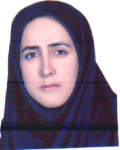| نویسندگان | Zahra Shams Ghamsari, Hadis Bashiri |
|---|---|
| نشریه | Surfaces and Interfaces |
| شماره صفحات | 100907 |
| شماره مجلد | 21 |
| ضریب تاثیر (IF) | 3.724 |
| نوع مقاله | Full Paper |
| تاریخ انتشار | 2020-09-23 |
| رتبه نشریه | علمی - پژوهشی |
| نوع نشریه | الکترونیکی |
| کشور محل چاپ | ایران |
| نمایه نشریه | JCR |
چکیده مقاله
In this research, photocatalytic generation of hydrogen from methanol has been investigated in a solution containing TiO2 nanoparticles either with or without Cu ions using kinetic Monte Carlo simulation and response surface methodology. The obtained mechanism and the kinetic parameters of this process were confirmed by the good qualitative correspondence between the simulated and the experimental data. The RSM based on the central composite design (CCD) has been used to study the main square and interaction of independent variables initial concentration of methanol, irradiation, time of reaction, Cu concentration, and TiO2 concentration. According to the results, the time of reaction is the most influential variable with a positive effect on hydrogen generation efficiency. Increasing Cu ions to the solution until a certain amount has a positive impact on hydrogen generation efficiency, and then, it has a negative impact. Using KMC and RSM together, the optimum conditions were provided in which the efficiency of hydrogen production increases about fourteen times compared with the empirical one.
